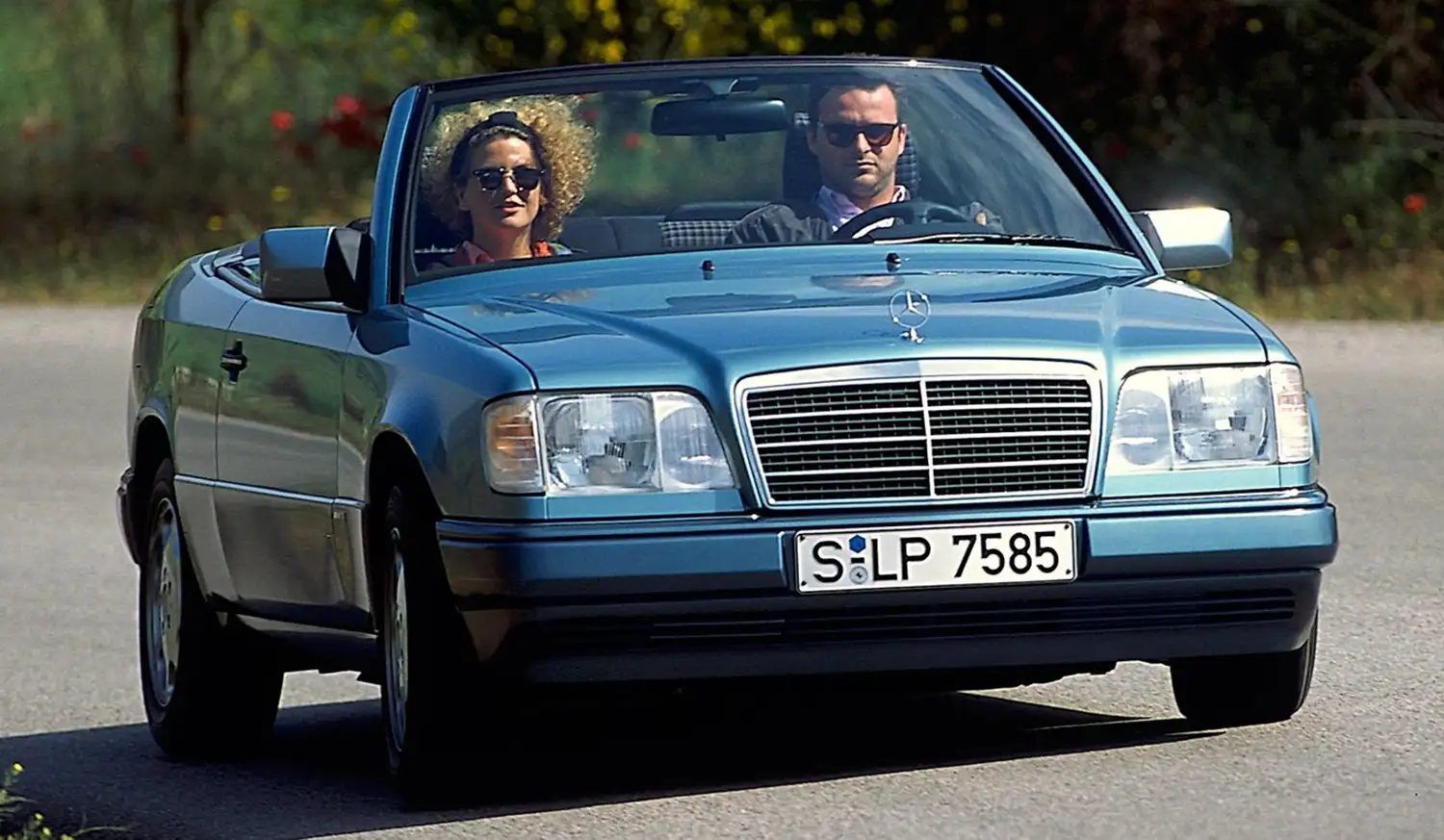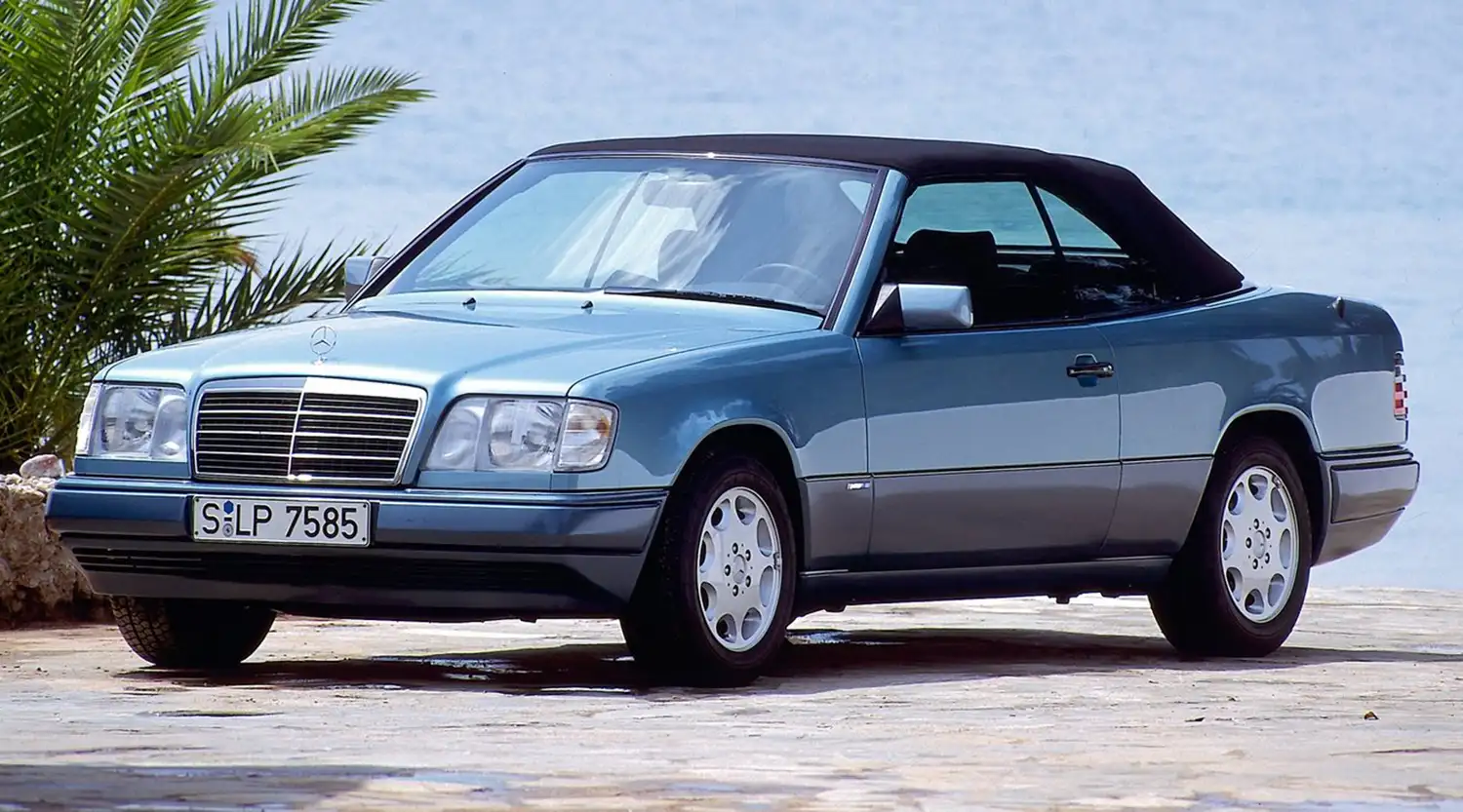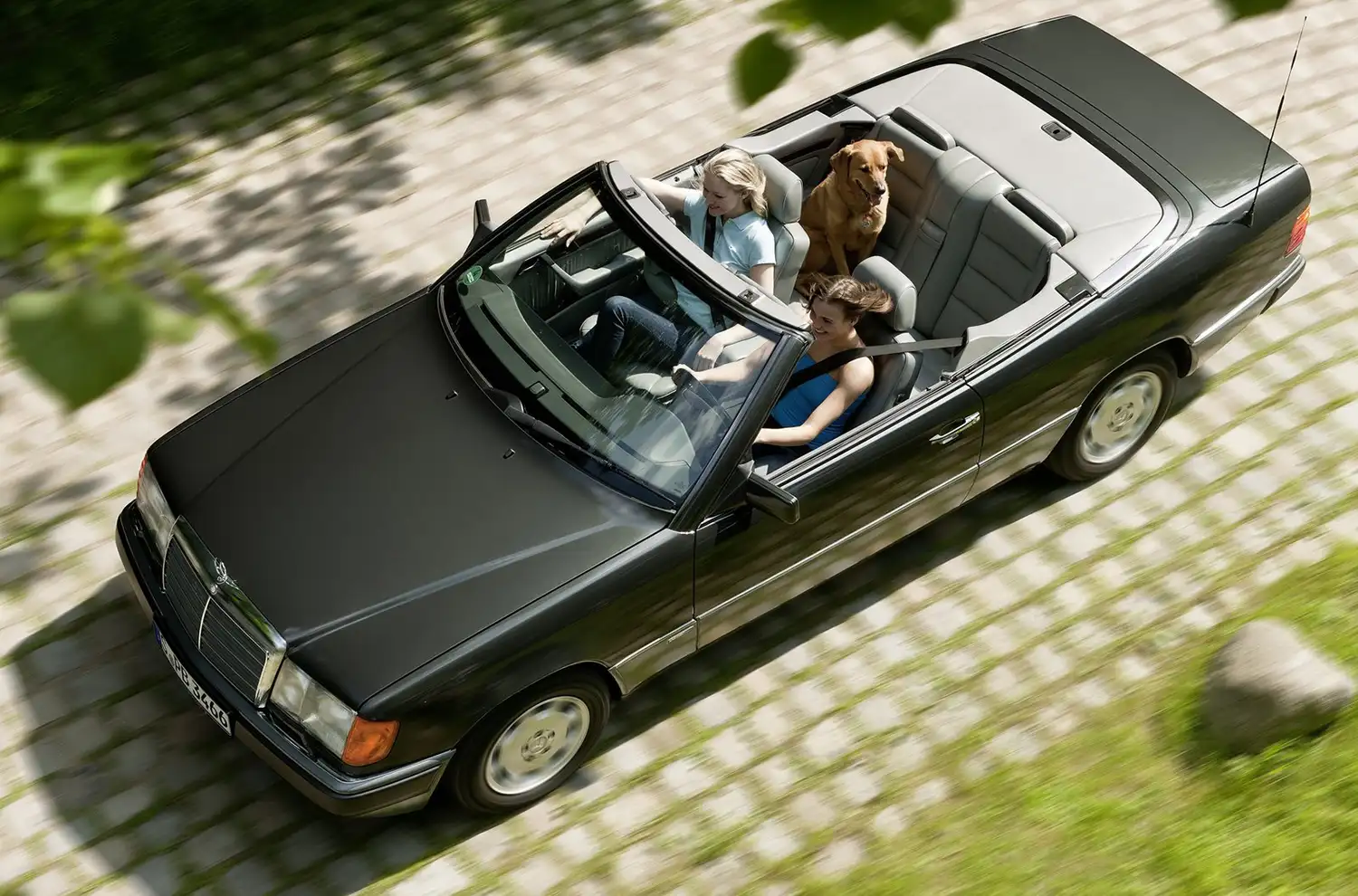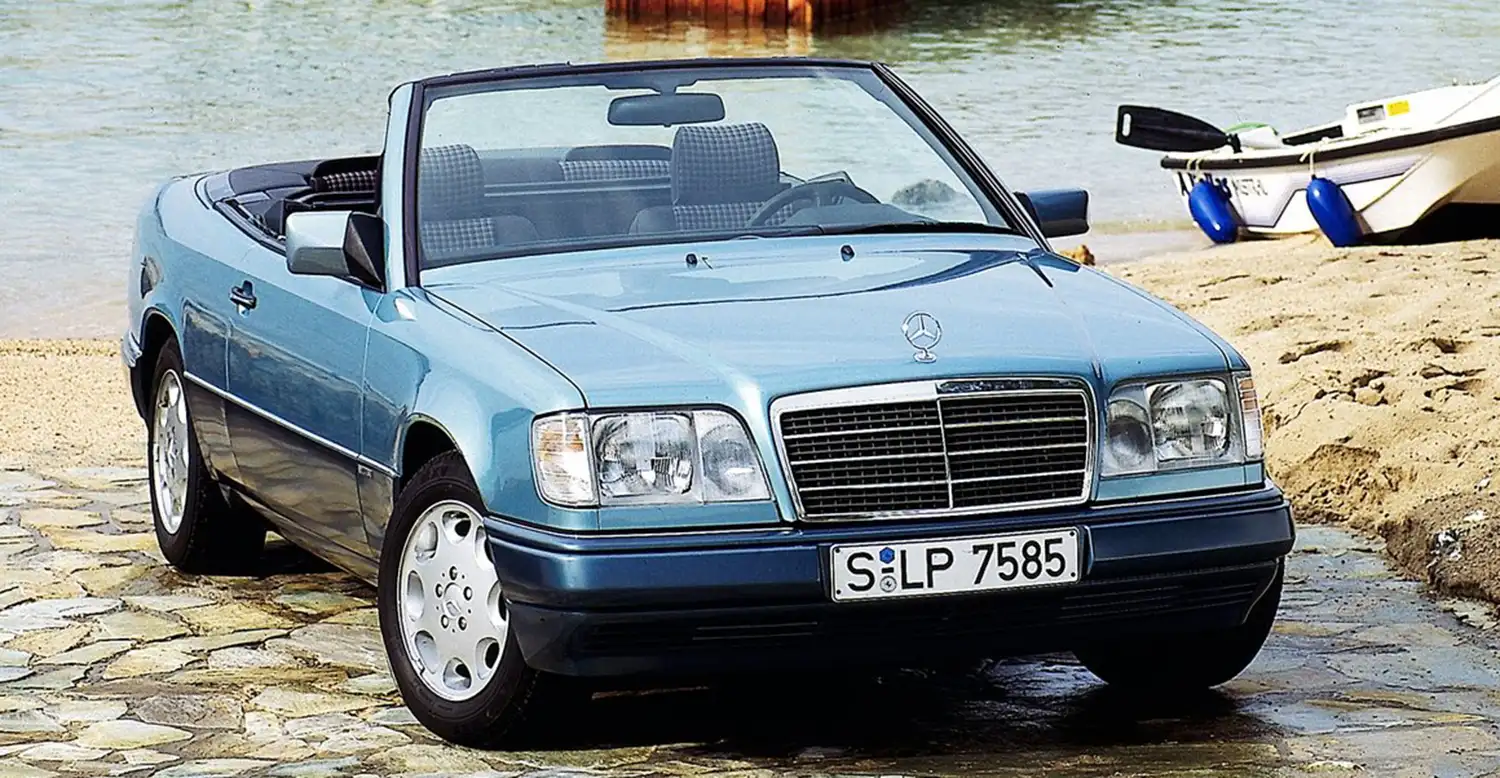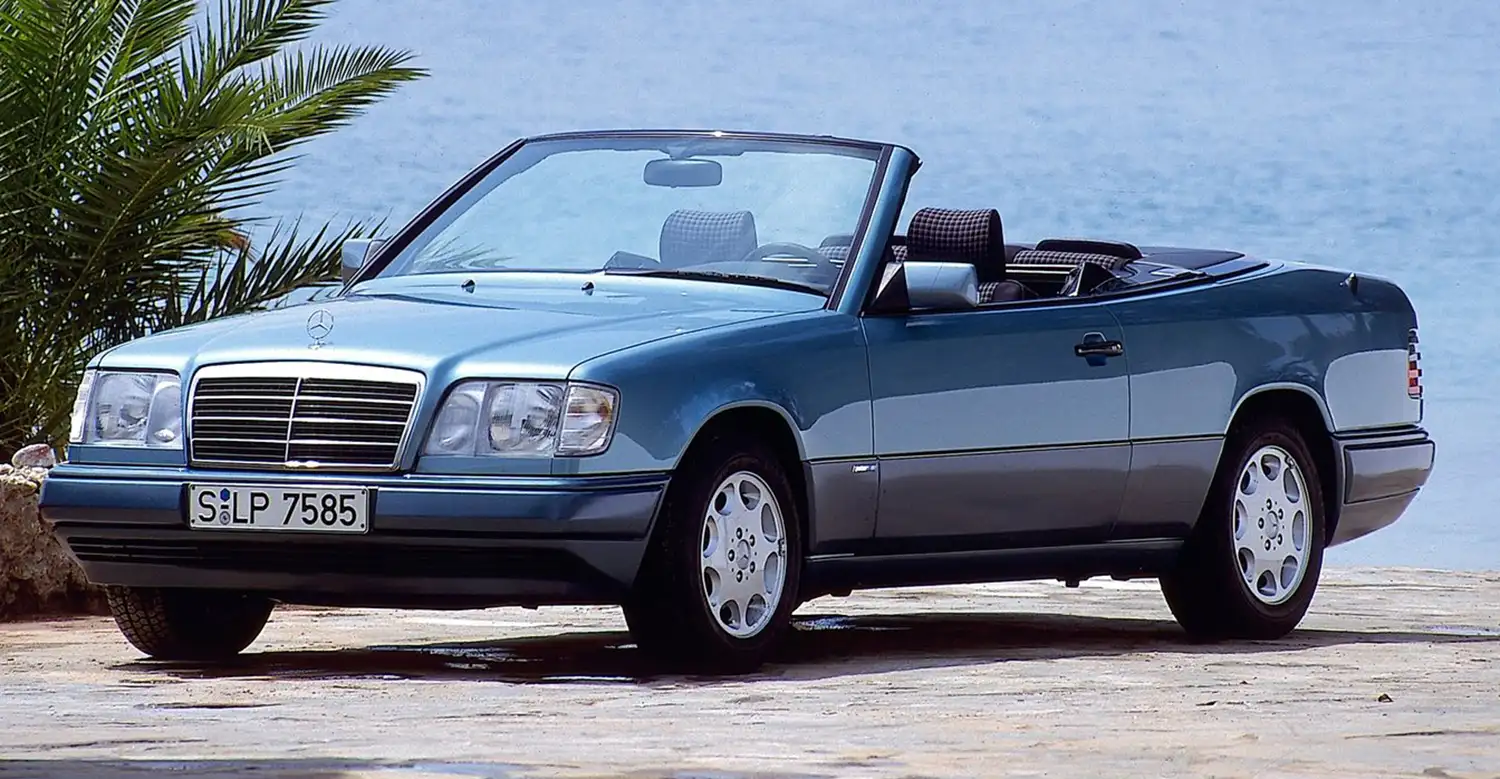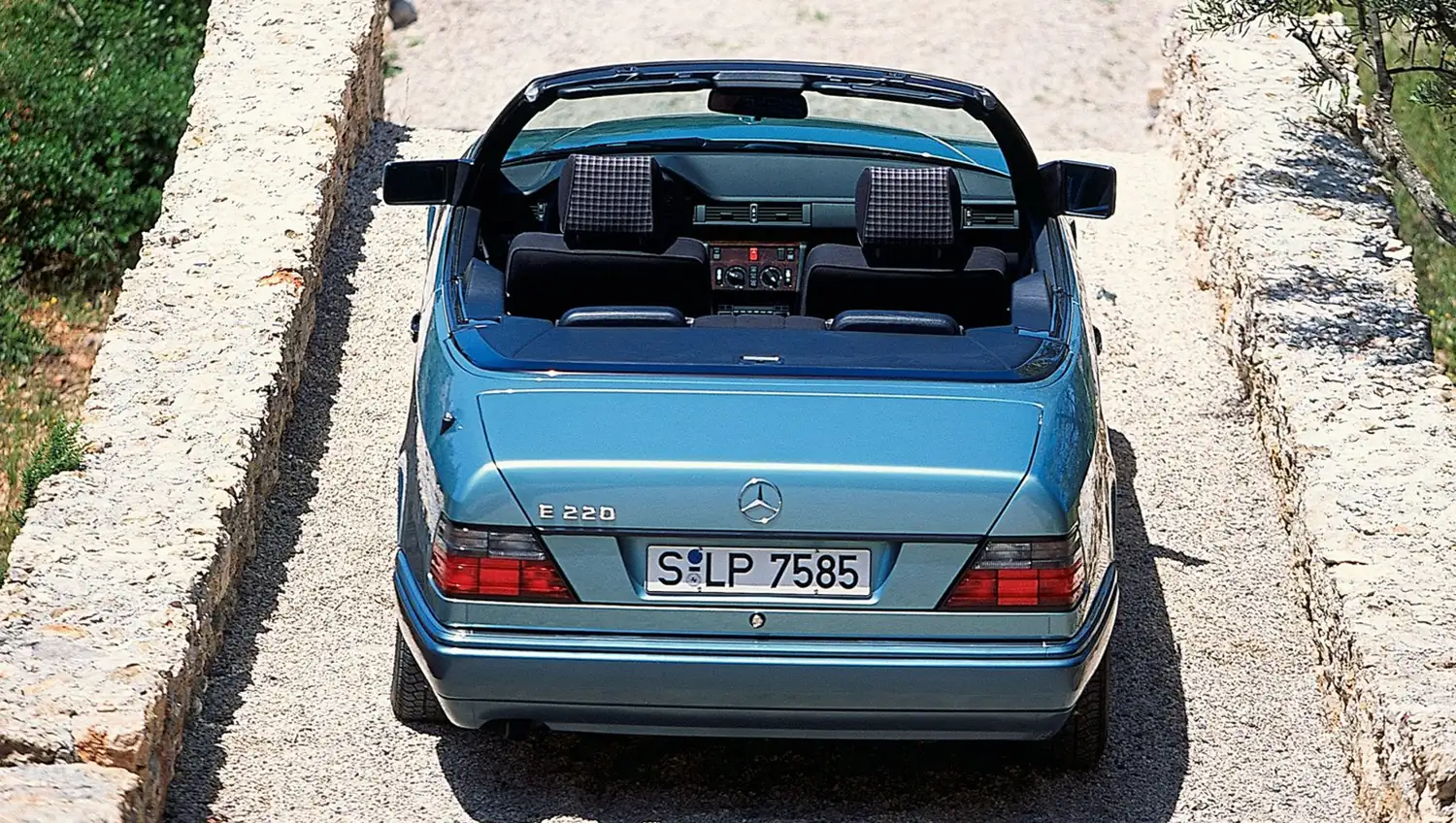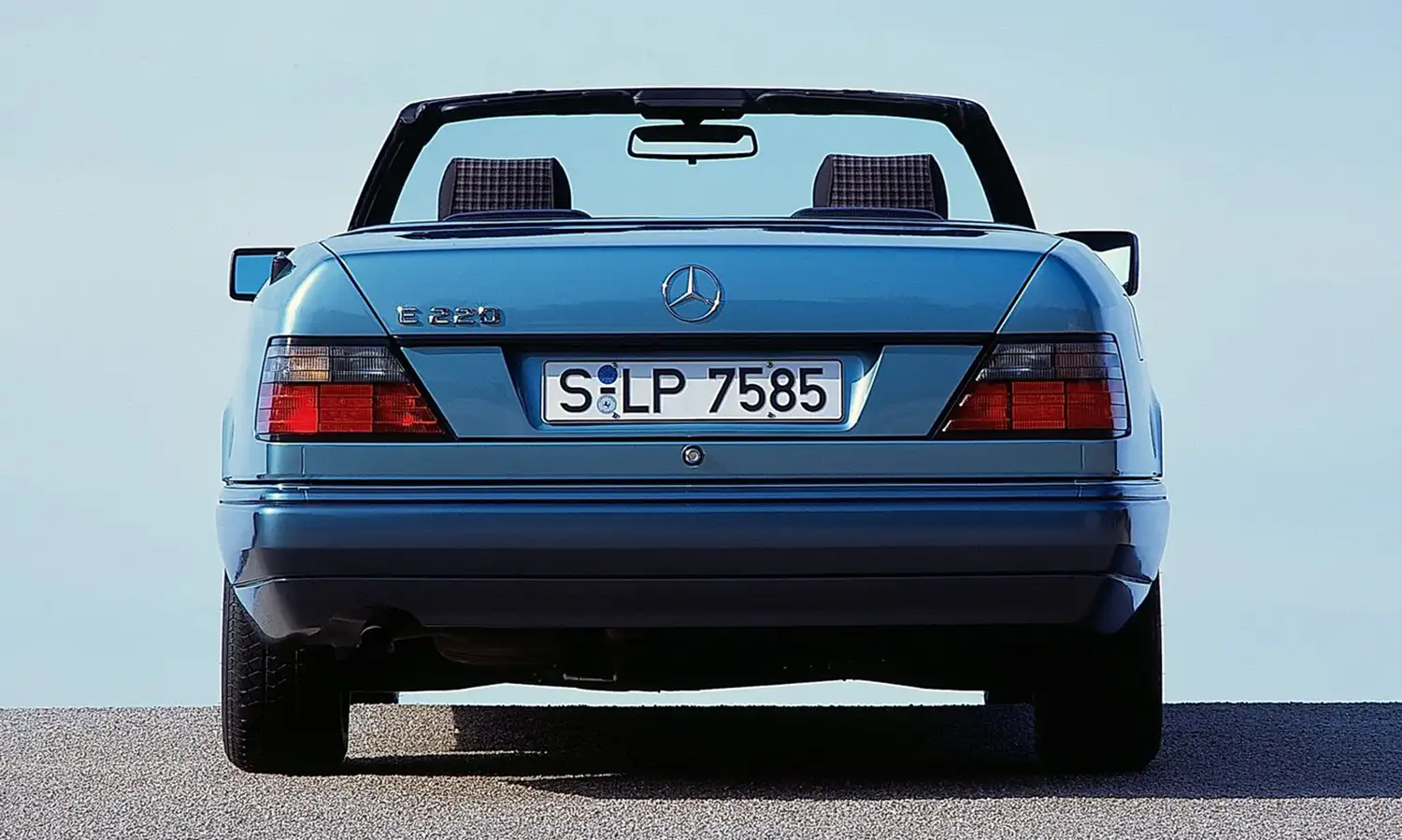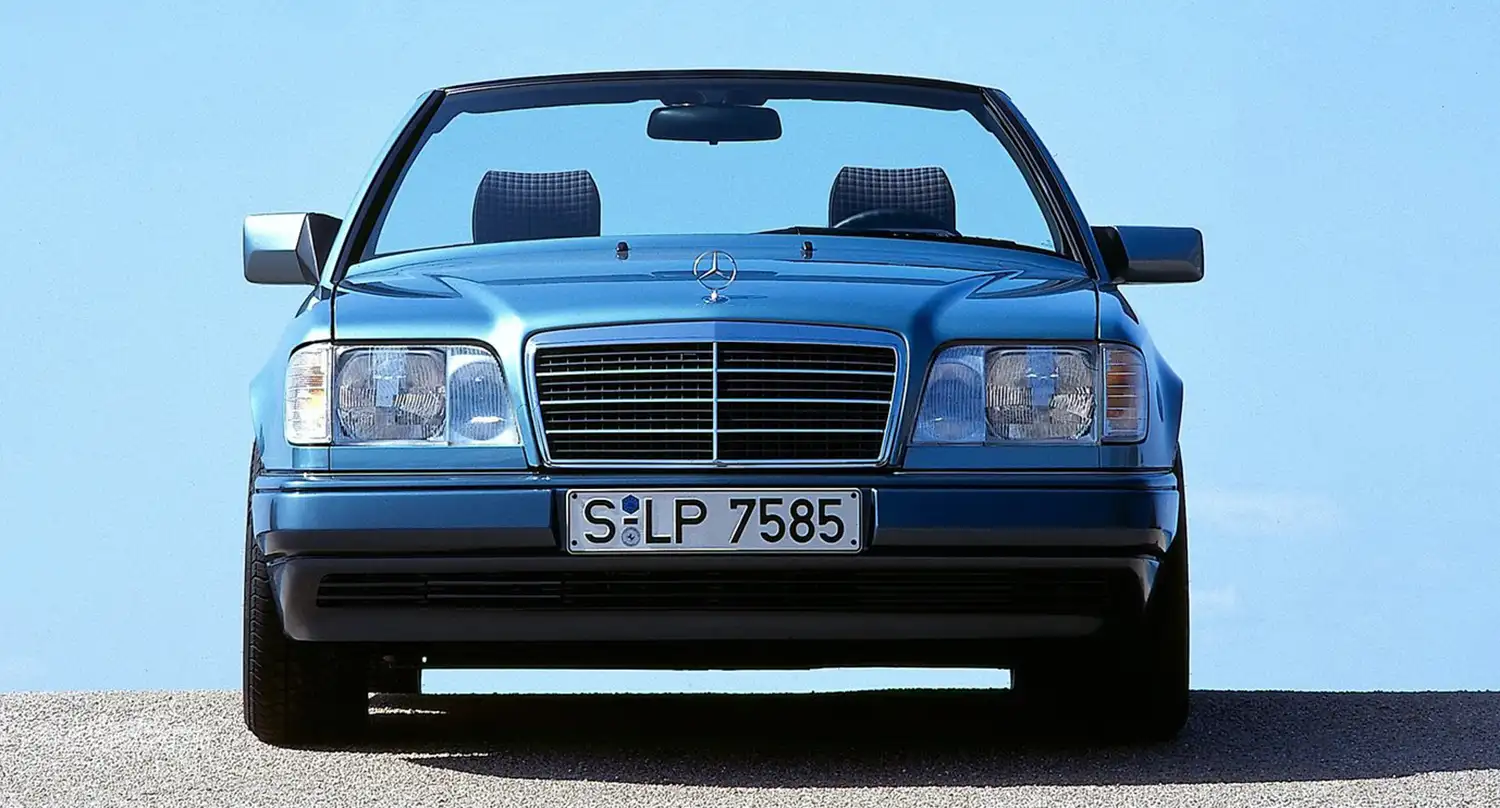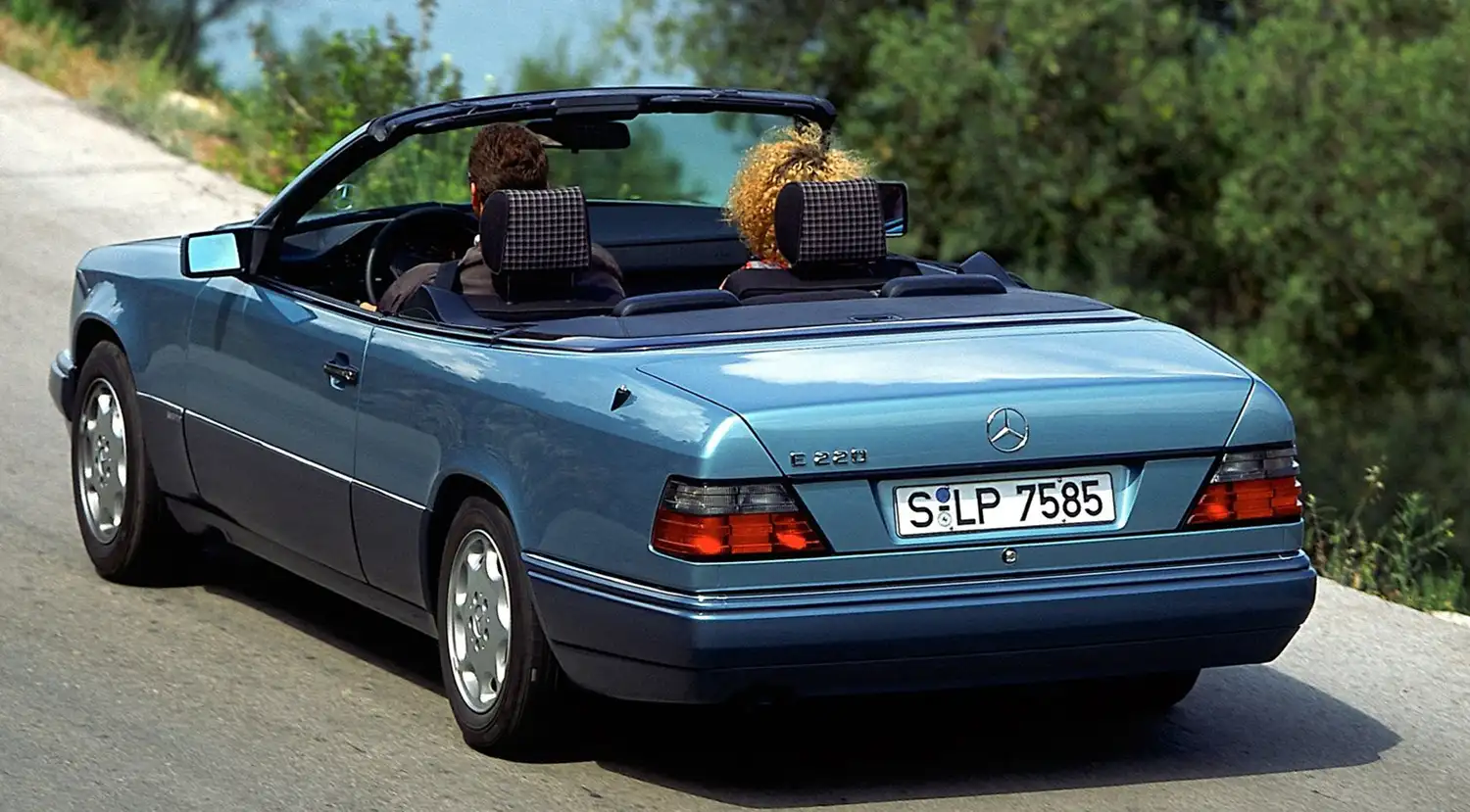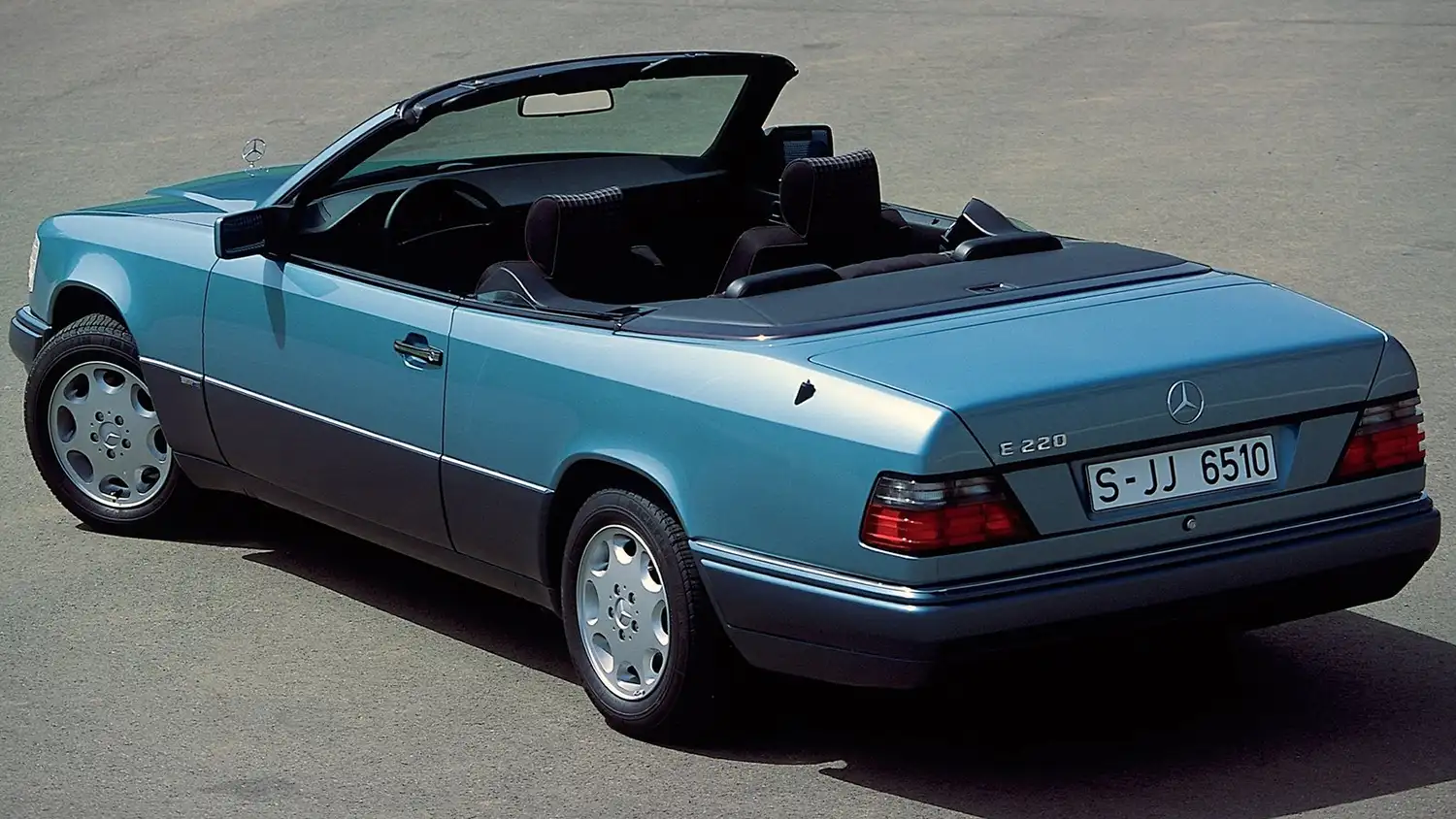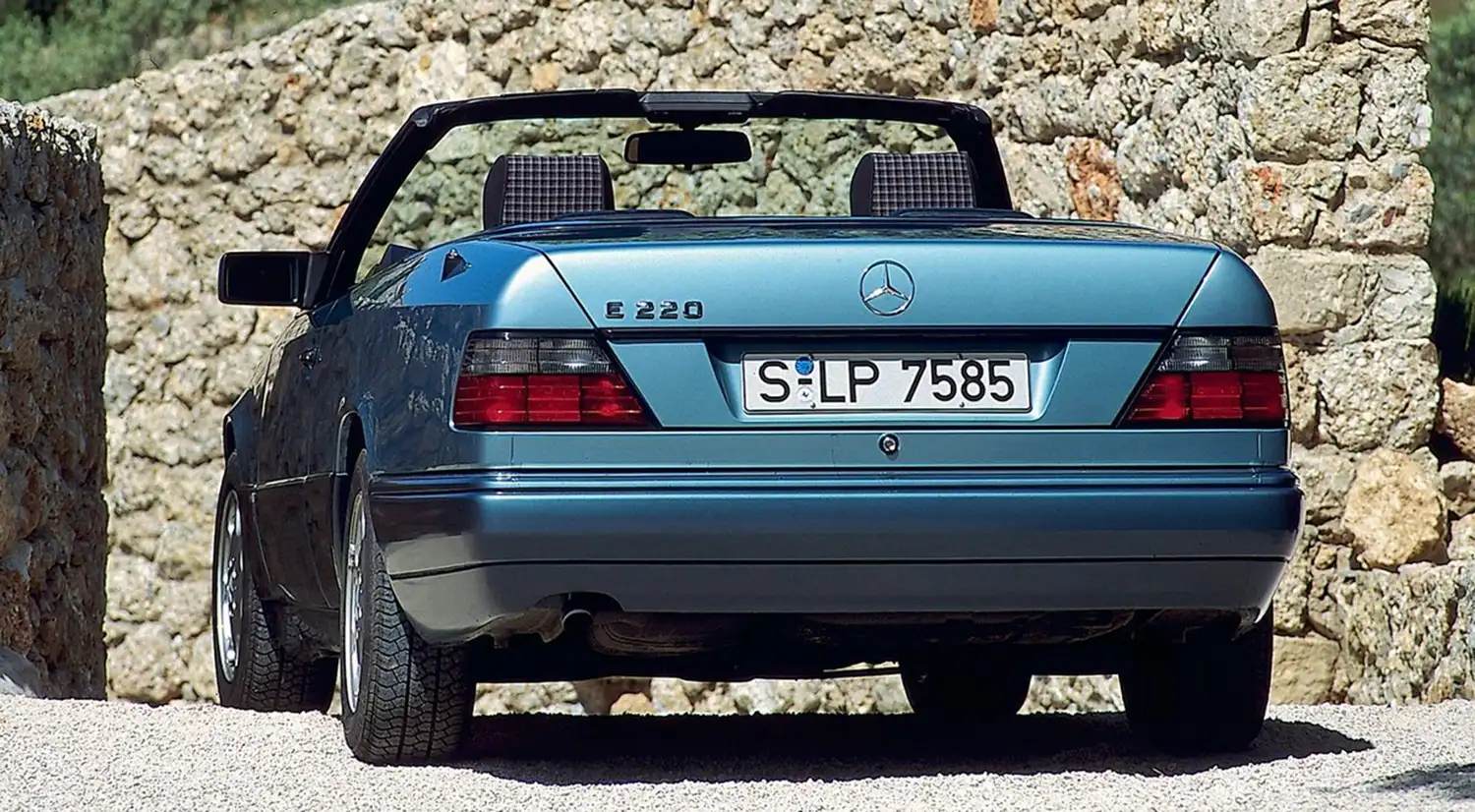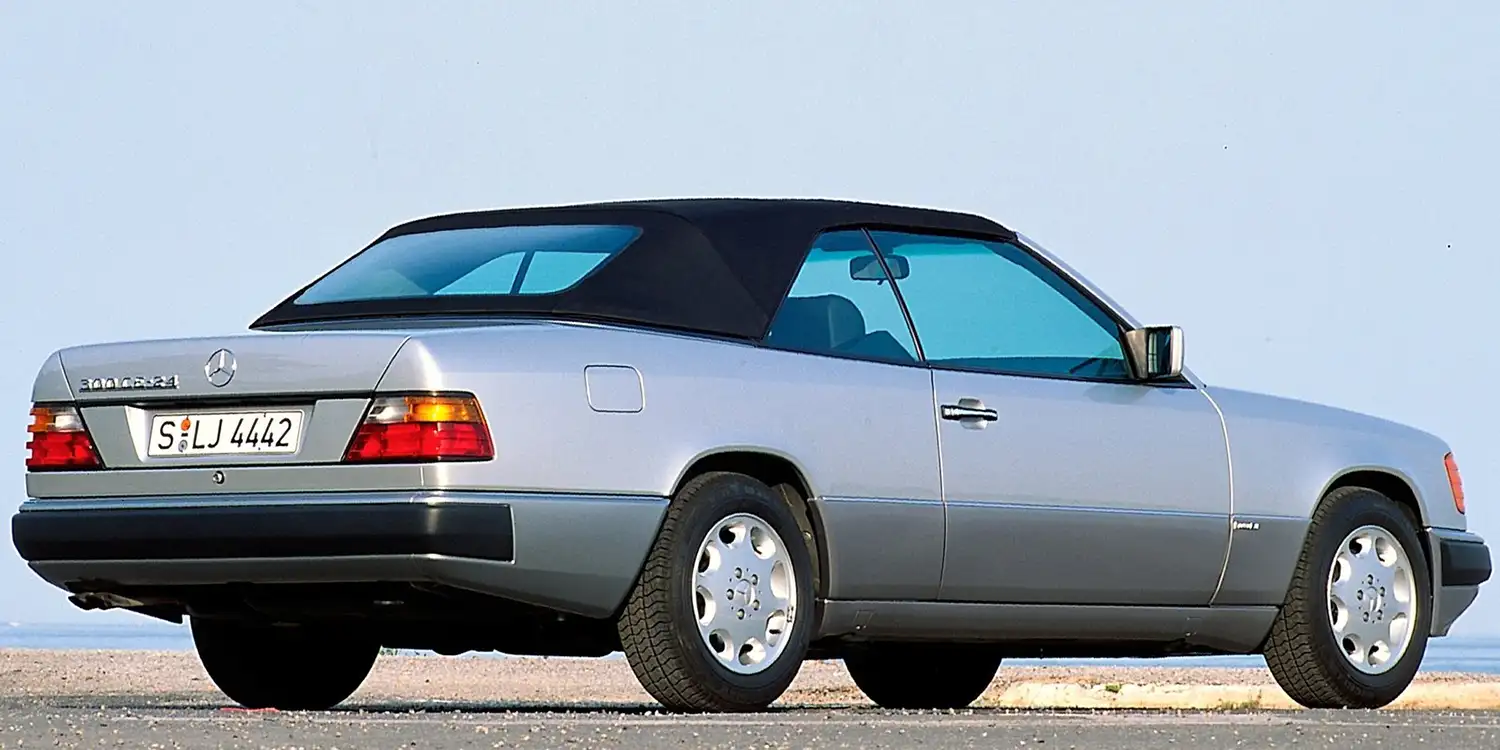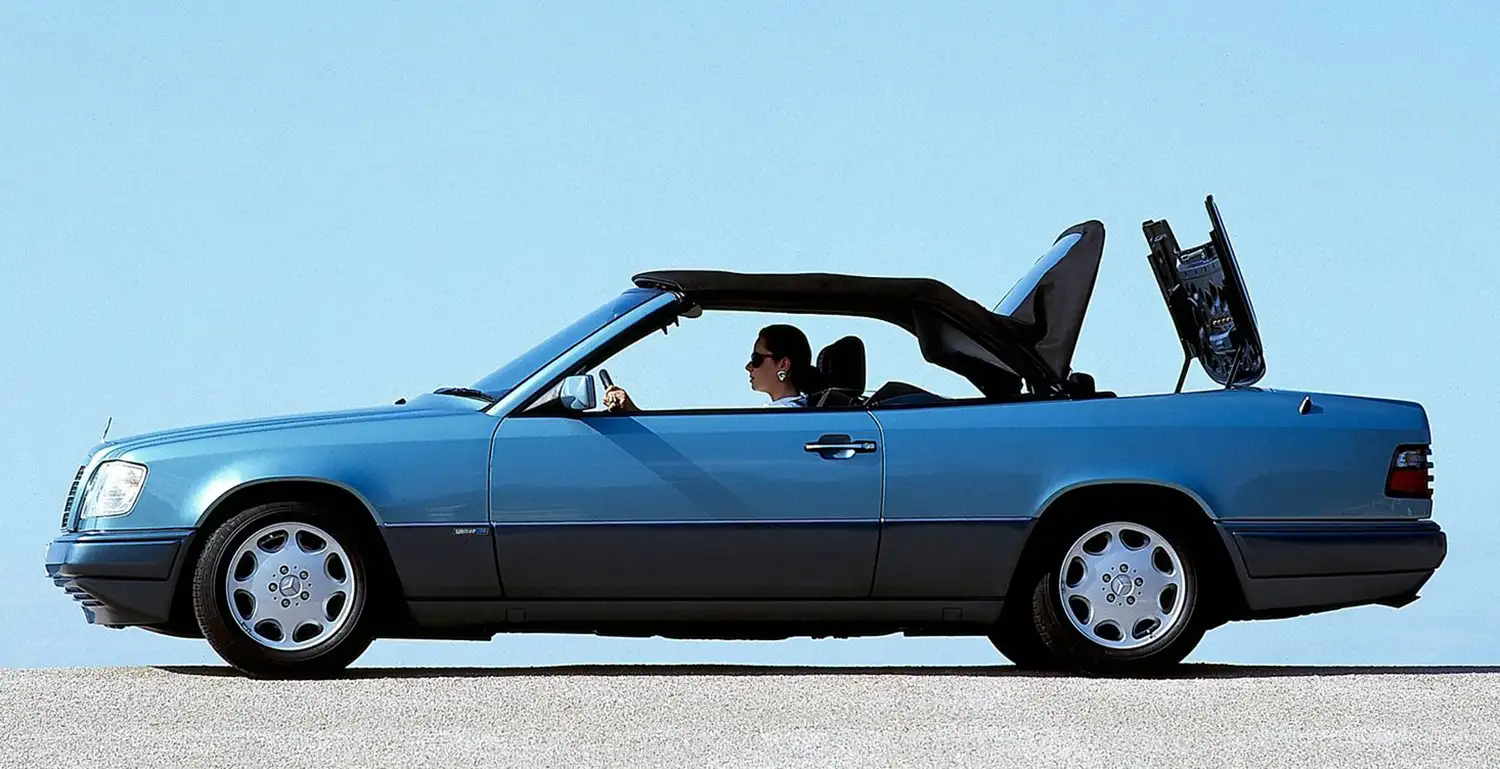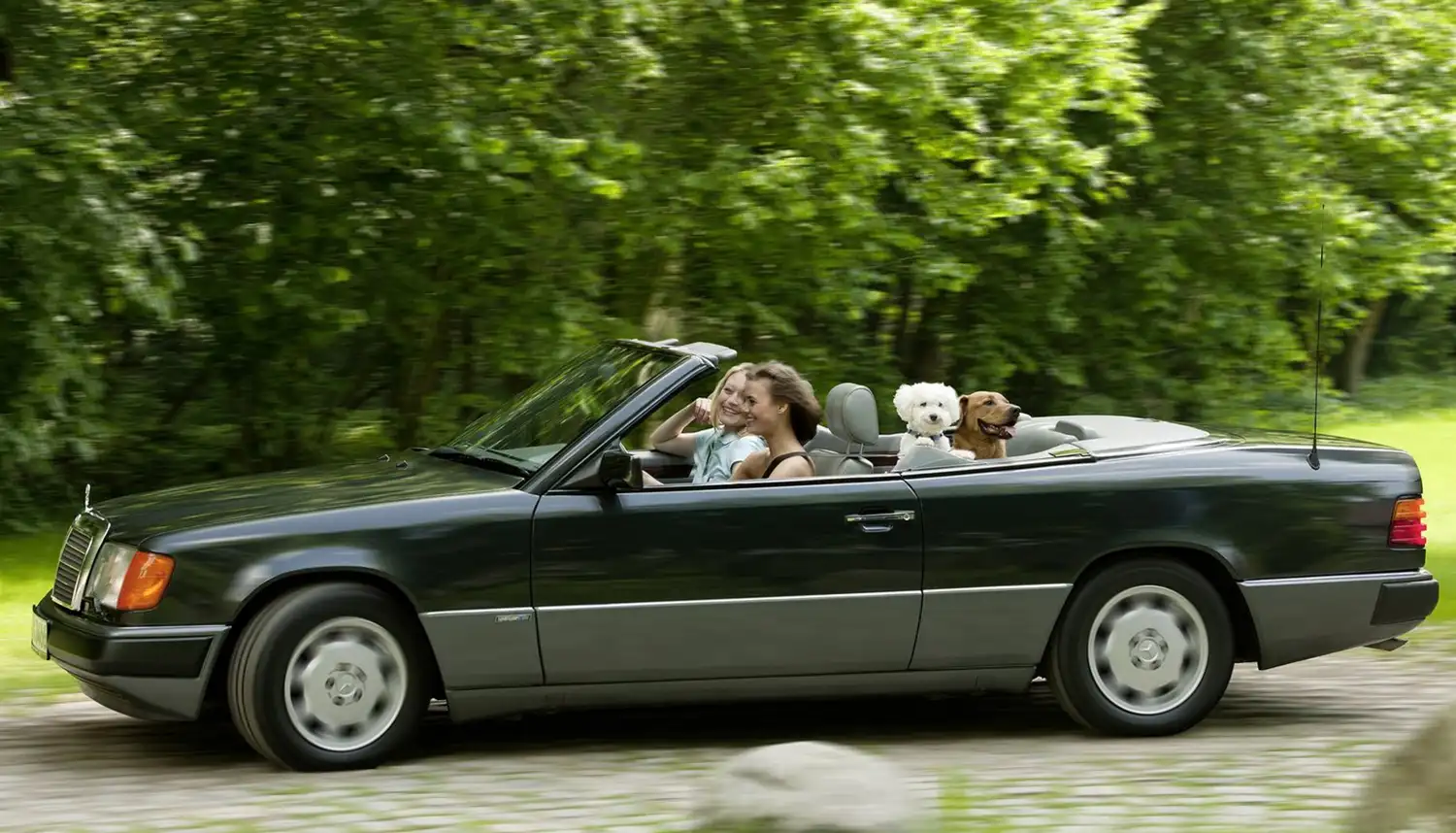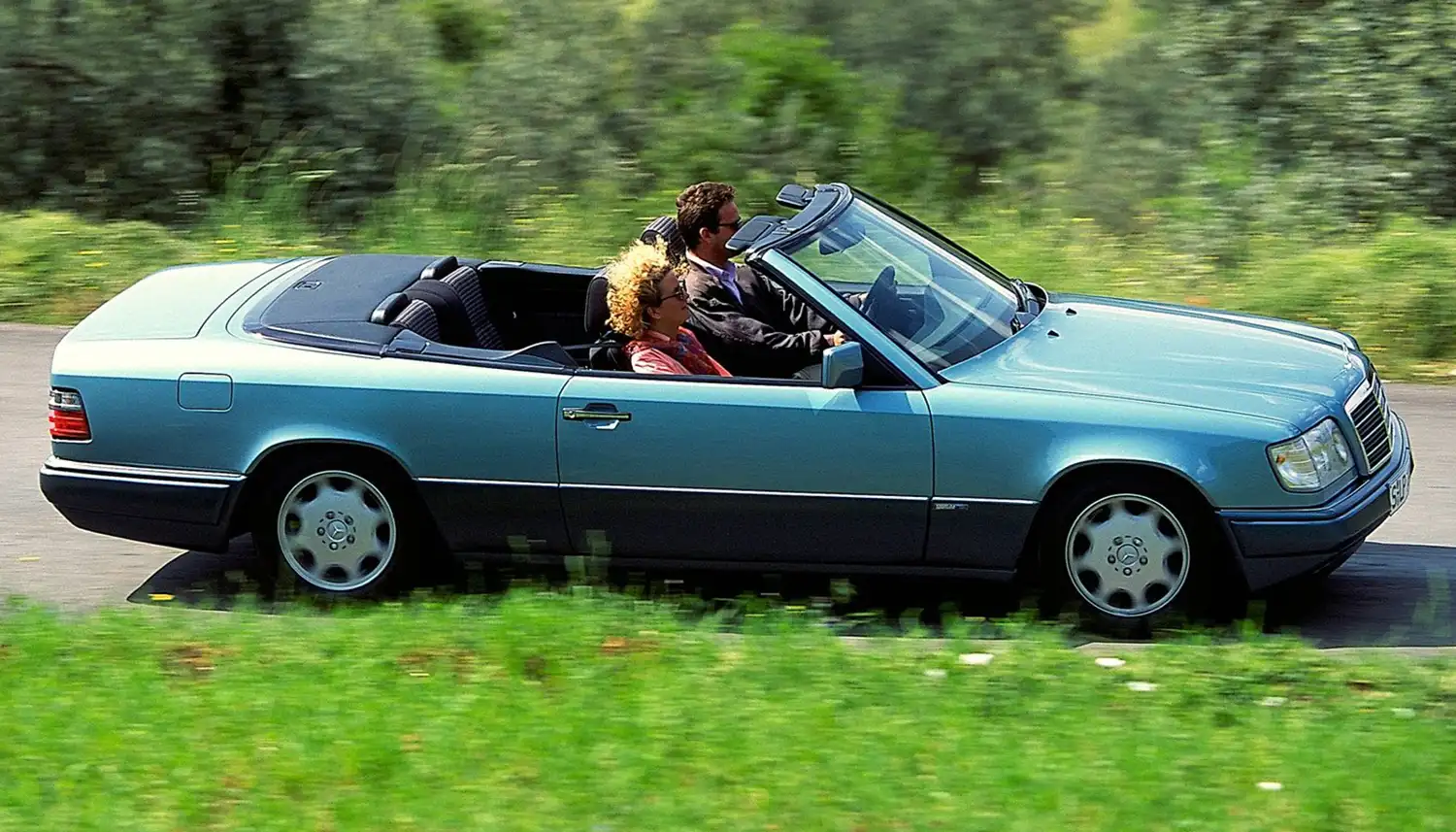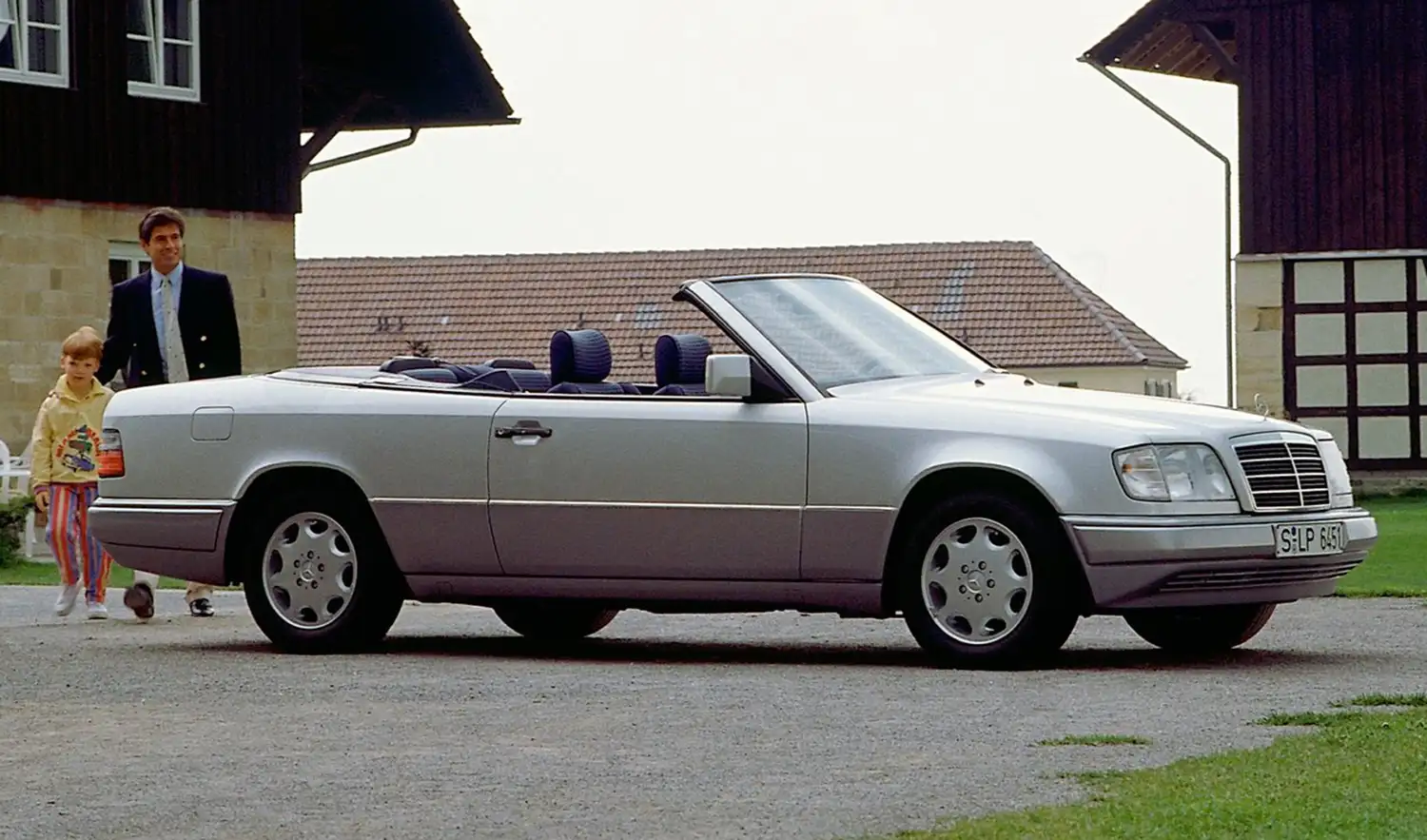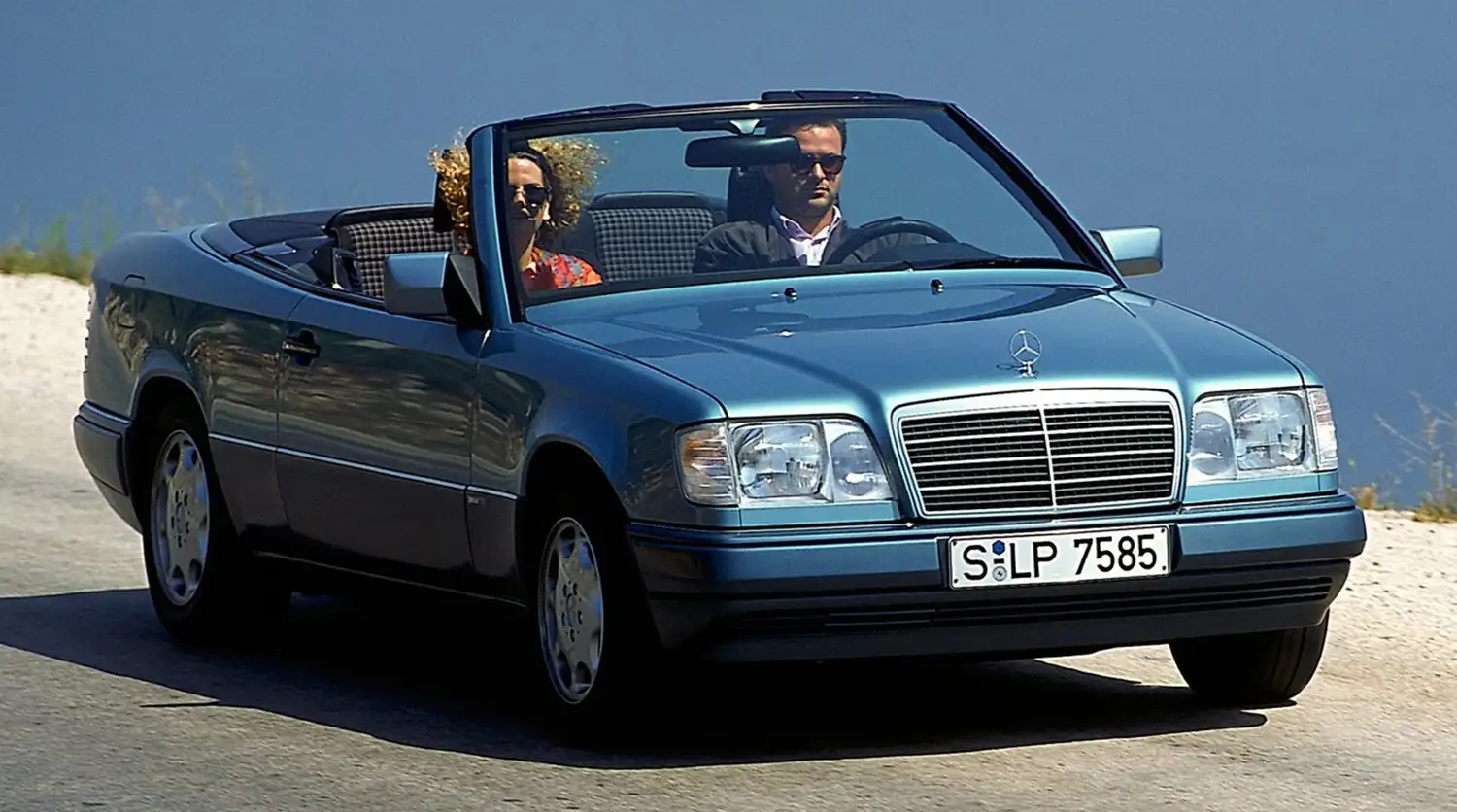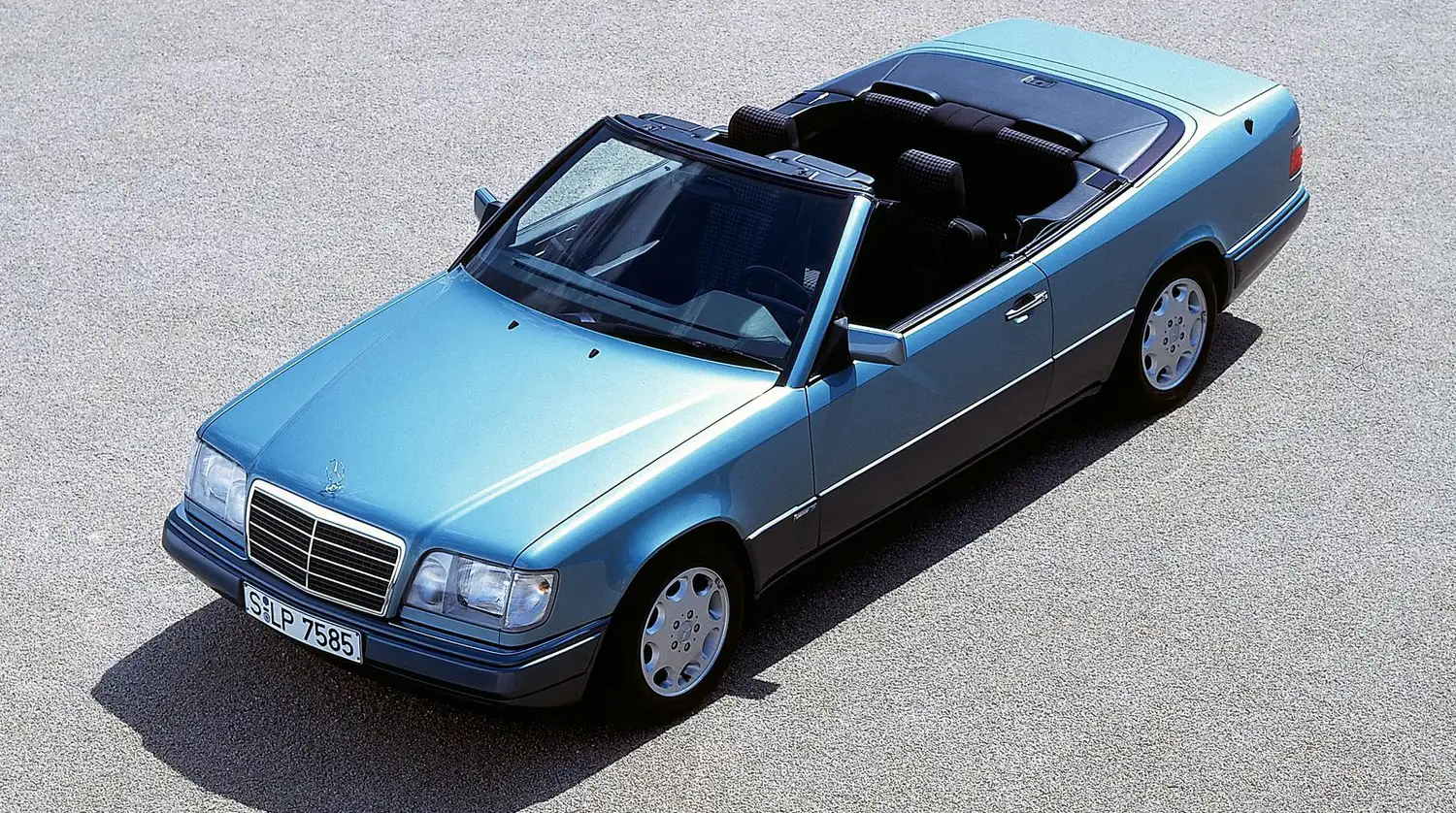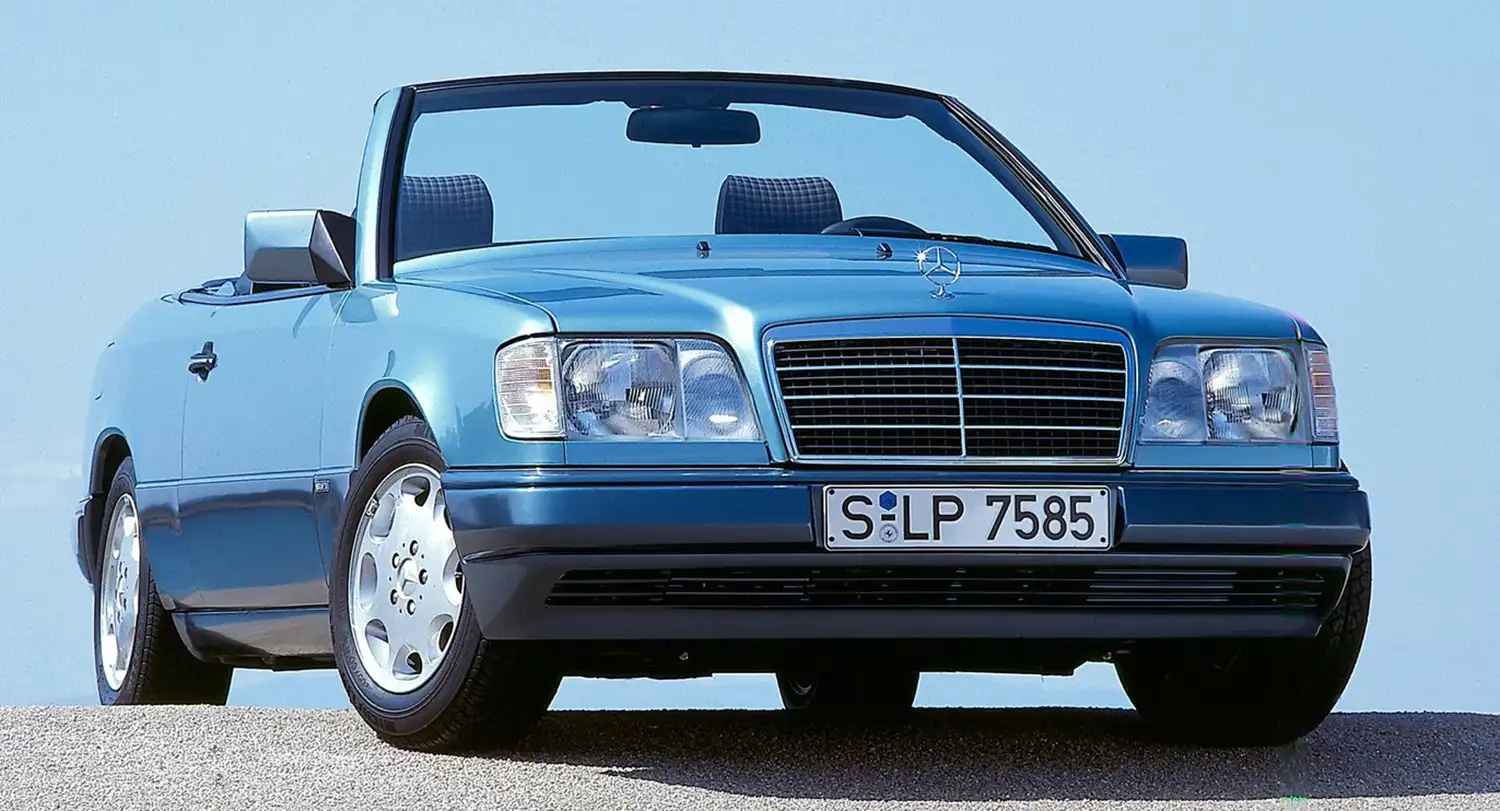
In 1991 Mercedes-Benz breathed new life into an old tradition: after an interruption of exactly 20 years, the brand returned to the market with a four-seater cabriolet, developed as a derivative of the intermediate class 124 series saloon. The debut vehicle was the Mercedes-Benz E-Class Cabriolet 300 CE-24, which was built until 1993. Its immediate successor was the E 320 Cabriolet, but then came also the Mercedes-Benz E-Class Cabriolet E 200 and E 220 models, as well as the E 36 AMG Cabriolet as an exclusive highlight. Each of these were to become classics in their own right during their production period. What is more, they each had the potential to become genuine pieces of automotive history, since their production period – until 1997 – was relatively brief and total unit numbers amounted to just 33,952 examples in all.
The engineering in the Mercedes-Benz E-Class Cabriolet came from the series’ four-door counterpart. Features that demonstrated the company’s innovative strength included, for example, the eccentric-sweep panoramic windscreen wiper, which offered the largest swept-area of any passenger car, as well as multi-link independent rear suspension and shock absorber strut independent front suspension located by individual wishbones. The braking system was also borrowed without modification from the Saloons.
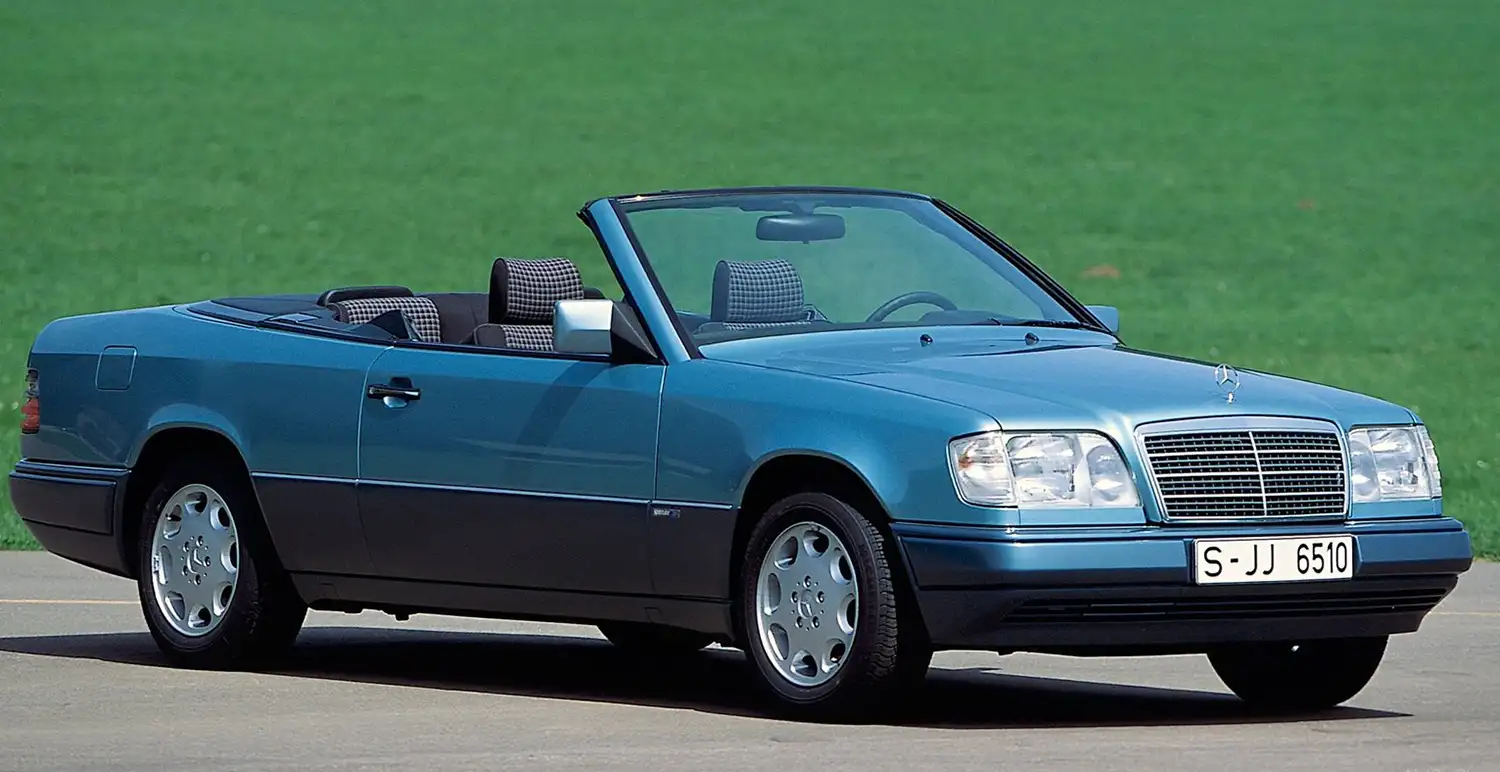
The body of the Mercedes-Benz E-Class Cabriolet took after the Coupé, presented in 1986. Both of these were rather shorter than the Saloon. Other stylistic features included the slightly flatter front and rear screens, an absence of B-pillars and just two doors. Nevertheless, conversion to the open-topped vehicle was extremely complex: in order to meet customary Mercedes-Benz levels of safety and quality the Mercedes-Benz E-Class Cabriolet had to be fitted with numerous modified or redesigned structural components – approximately 1000 all-new design elements in total. In addition, the engineers designed a sophisticated protection system in the event of a rollover accident. This involved an extendable/retractable sensor-controlled linear rollover bar behind the rear passengers, which deployed automatically within 0.3 seconds in the event of a rollover accident. The A-pillars were also reinforced. The sum of all these measures brought the Mercedes-Benz E-Class Cabriolet of the A 124 series – to give the model its precise in-house designation – to the same protection level as its closed counterpart.
The padded soft top and heated rear windscreen made of safety glass made the vehicle practical for year-round use. When the roof was open, it was stowed completely in a compartment behind the rear seats, hidden by a fixed cover plate and leaving nothing above the body line to disturb its elegant cabriolet form. In open-topped mode, in particular, the vehicle exuded classical beauty.
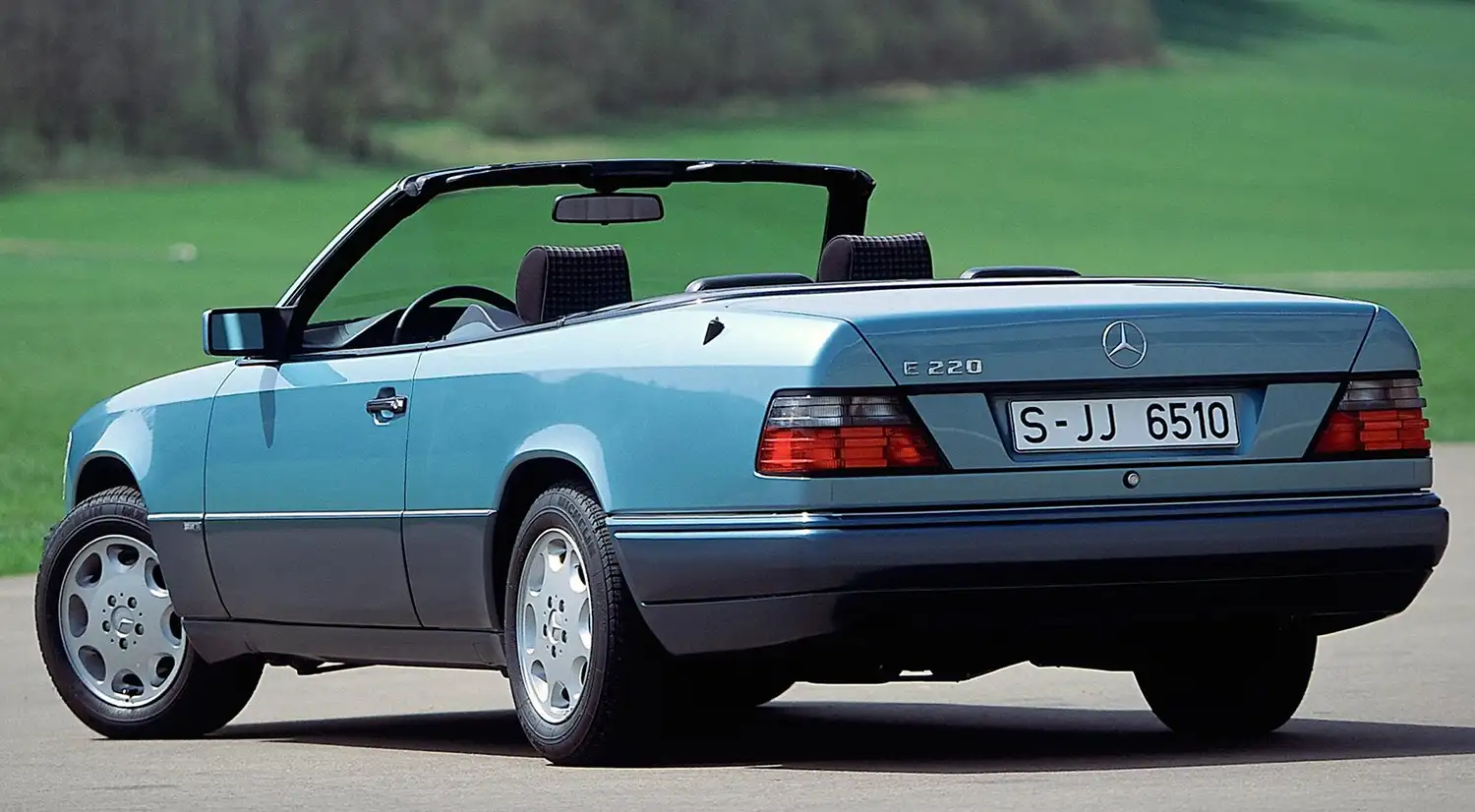
In terms of comfort, the Mercedes E-Class Cabriolet offered all the advantages of the other models in the series, making for high-class travel whether in urban traffic or on long-distance hauls. At the same time, the brand’s definition of comfort was exceptionally comprehensive, going beyond simply physical well-being. A good example was the low level of noise afforded by the Mercedes-Benz E-Class Cabriolet of the 124 series with closed roof. Although this was clearly slightly higher than in the Saloons, the padded soft top and tight-fitting joints ensured that noise levels were kept below a maximum level; on the one hand, this came as a welcome relief to passengers, on the other, it was much less tiring on drivers over lengthy periods on the road. The Mercedes E-Class Cabriolet also featured an electric belt feeder, which automatically presented the seat belt comfortably to driver and front passenger once they were seated. This equipment feature was also as much about safety as comfort, since it served to simplify the task of fastening the seat belt.
The fact that the Mercedes-Benz E-Class Cabriolet of the 124 series achieved classic status during their own production period is now of great benefit in today’s market. Since they were always considered special vehicles, and often used as second cars, the condition in which vehicles are offered for sale today is generally high and actual mileages often low. For anyone interested in a Cabriolet of the 124 series as a modern classic, therefore, the quality of vehicles is basically sound – nevertheless it is essential to take a close look in individual cases.
There are also vehicles that come with a manufacturer’s warranty, however.

Mercedes-Benz Young Classics regularly has Cabriolets in above-average condition and which are therefore supplied with a warranty – an offer unique in the automotive industry.
Regardless of the modern classic’s origins, however, the exceptional Mercedes-Benz original parts supply is sure to help with maintenance. For virtually every part can be procured via a Mercedes-Benz partner and the company’s own ordering system; delivery is usually made overnight. Some authorised service shops – those with outstanding competence in handling older vehicles – have even been designated Classic Partners. In addition, all Mercedes-Benz sales and service outlets continue to provide a high level of technical expertise. Not for nothing does the slogan “Service for a lifetime” apply to all vehicles of the brand.
